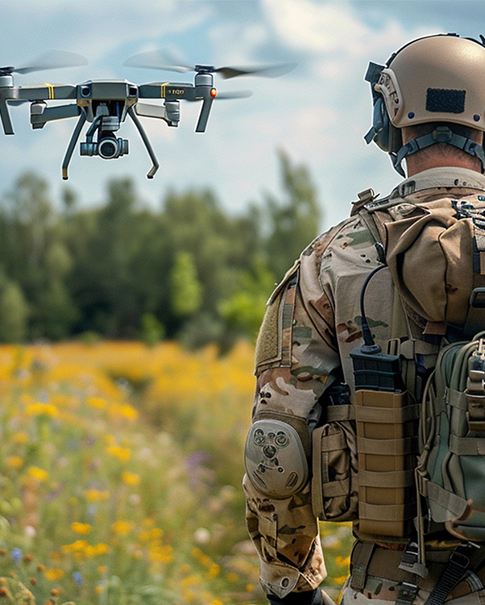Product Details
1. Core Design & Operation
· Electric Micro-Rocket Deployment: Features an electrically triggered micro-rocket system for forceful, rapid parachute ejection—critical for low-altitude emergencies where split-second timing matters.
· Dual Activation Modes: Pilots can activate manually for direct control, while automatic deployment integrates with onboard flight control systems, triggering instantly when anomalies (e.g., power loss, structural failure) are detected.
· ECU Compatibility: Integrates seamlessly with modern flight control units via CAN, PWM, or RS-232 communication protocols, accepting 12–36V power input to align with standard aircraft electronics.
2. Key Features & Advantages
· Rapid Deployment: Fast activation (3–4s under hovering conditions) minimizes altitude loss, crucial for low-altitude emergencies.
· High Compatibility: Works with diverse eVTOL and multirotor models, thanks to flexible communication protocols and power input ranges.
· Controlled Descent: Low maximum descent rates (≤7–7.5 m/s) reduce impact to levels equivalent to a 2.5–2.9m fall, protecting occupants and equipment.
· Extreme Durability: Operates in -40°C to +60°C, with a 12-year service life and 6-year maintenance intervals, ensuring long-term reliability in harsh environments.
Versatile Performance: Handles high deployment speeds (up to 220 km/h) across models, adapting to diverse flight scenarios.
3. Model-Specific Specifications
Each T192 model is tailored to different platform weights, with shared core features (dual activation, ECU compatibility) and targeted parameters:
· T192-350: Supports a maximum deployment weight of 350kg, with a total system weight of 9.8kg (ejection system: 2.2kg; parachute component: 7.6kg). Packaged in a 30x25x15cm soft pack, it deploys in 3s under hovering conditions, with a minimum deployment altitude of 40m. Maximum descent rate is ≤7 m/s (equivalent to a 2.5m fall), and the main canopy area is 92㎡. It delivers 400NS total impulse with a rocket motor burn duration of 1±0.1s.
· T192-500: Accommodates up to 500kg, with a total system weight of 11.5kg (ejection system: 2.2kg; parachute component: 9.3kg). Packaged in a 35x25x15cm soft pack, deployment takes 3s under hovering, with a minimum altitude of 50m. Maximum descent rate is ≤7.5 m/s (2.9m fall equivalent), and the main canopy spans 110㎡. It shares the 400NS total impulse and 1±0.1s burn duration.
· T192-650: Handles 650kg, with a total system weight of 13.8kg (ejection system: 2.5kg; parachute component: 11.3kg). Packaged in a 15×26×50cm soft pack, deployment takes 4s under hovering, with a minimum altitude of 50m. Maximum descent rate is ≤7.5 m/s (2.9m fall equivalent), and the main canopy area is 140㎡. It delivers 700NS total impulse with a 1±0.1s burn duration.
·T192-800: Supports up to 800kg, with a total system weight of 15kg (ejection system: 2.5kg; parachute component: 12.5kg). Packaged in a 40×14×34cm soft pack, deployment takes 4s under hovering, with a minimum altitude of 60m. Maximum descent rate is ≤7.5 m/s (2.9m fall equivalent), and the main canopy spans 175㎡. It shares the 700NS total impulse and 1±0.1s burn duration.
· All models feature a maximum deployment load of 6g, dual activation (manual/flight control), and operate in -40°C to +60°C.
4. Ideal Applications
· eVTOLs (electric vertical takeoff and landing aircraft)
· Low-altitude multirotor drones
· Urban air mobility (UAM) platforms
· Commercial or passenger-carrying aerial vehicles requiring integrated emergency recovery systems
